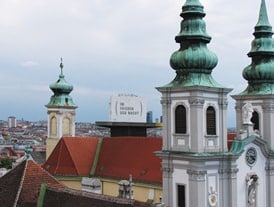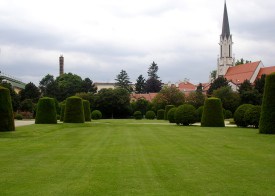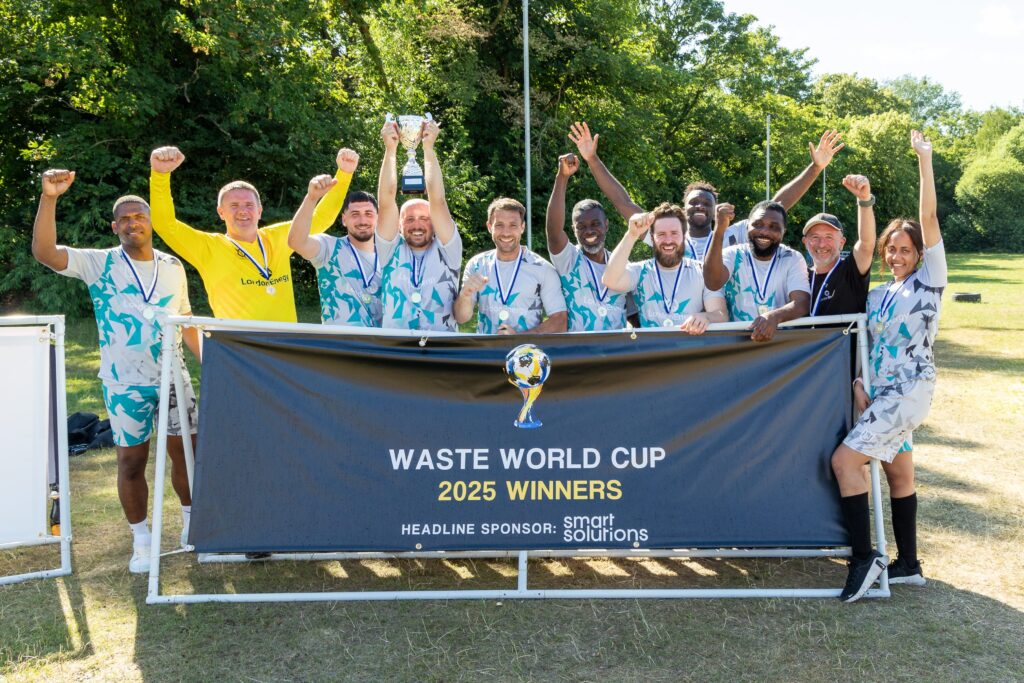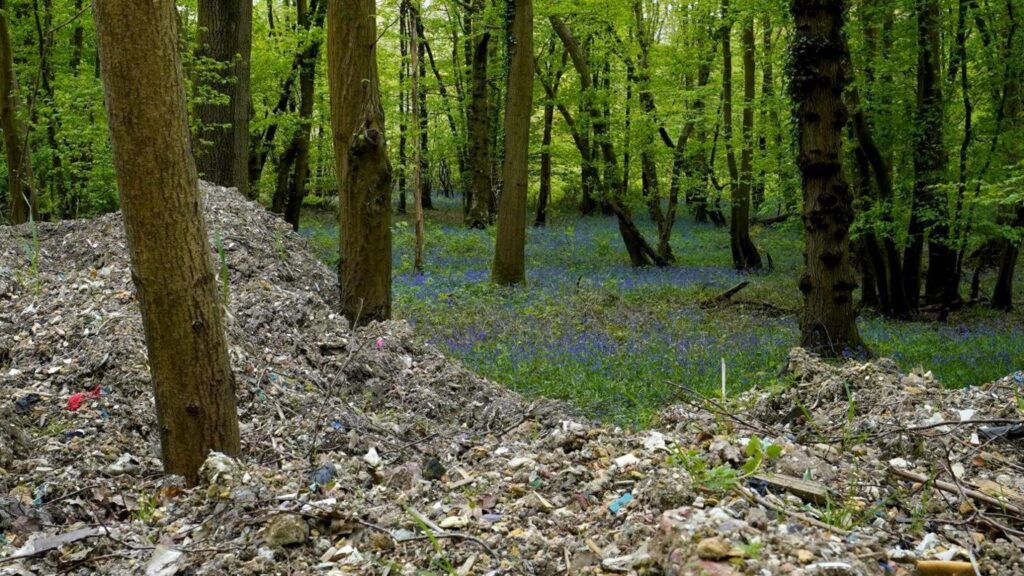The third event of its type was held in ISWA’s home city of Vienna on 31 May and 1 June 2012, writes Jeff Cooper, president of the Association.
In his welcoming comments Rainer Kronberger, who works for MA48, the City of Viennas waste collection and treatment department, and who is also the President of ISWA Austria, noted that Vienna had promoted a wide range of waste prevention projects starting in 2002. These included: a network for small-scale repair workers with treatment of hazardous wastes, the sponsorship of a re-use workshop with training opportunities plus a range of initiatives to make public events within Vienna more sustainable. This meant adoption of re-usable cutlery and plates and drinking vessels with of course the provision of the associated mobile dishwashing facilities. However, from later statistical analyses it was apparent that the amount of waste generated in Vienna was still increasing, although a higher proportion was being recovered.

The initial presentation was by Peter Borkey from the Environment Directorate of the OECD. He noted that the OECDworking groupon Waste Prevention and Recycling had defined sustainable materials management as: an approach to promote sustainable materials use, integrating actions targeted at reducing negative environmental impacts and preserving natural capital throughout the life-cycle of materials, taking account economic efficiency and social equity.
Defra
Although Peter Borkey focussed on Sustainable Management of Materials in Mobile Phones he started his presentation with an example drawn from work by Defra on the energy consumption aspects throughout the conventional milk production and consumption system. The research shows that the greatest impact is in the primary production of milk and that other parts of the processing, distribution and storage systems were insignificant by comparison. Therefore as consumers we should only purchase sufficient milk to meet our needs otherwise we risk causing large environmental impacts when milk is discarded.
Costas Velis, reported on one strand of the ISWA Task Force Globalisation and Waste Management work covering the informal sector in recycling and prevention: can evaluating interventions facilitate inclusion/integration? The research shows that between 15 and 30 million people are informal waste pickers and that except for high income countries the informal sector accounts for a high proportion of recycling in cities, thus saving municipalities huge amounts of money. In discussion it was noted that while in some countries the informal sector workers would welcome greater integration in others, such as Turkey, they have no desire to change their existing status, otherwise they would need to pay tax.
Food Waste
Much of the conference was dominated by food waste prevention. Starting off the series of presentations was Hubert Reisinger, from the Austrian Environment Agency on the EU food waste prevention project. (A first report was published in 2010). He first looked at waste prevention targets from different EU states noting that most had yet to draft their waste prevention plans required under the 2008 revised Waste Framework Directive by December 2013. To date the most ambitious waste prevention targets have been set by Wales with a 27% reduction target in total waste generation by 2025 and 64.5% by 2050 compared to a 2007 baseline and with annual household and commercial waste prevention of 1.2% and 1.4% of industrial and C&D waste compared to a 2006/07 baseline.
Shopping addiction
Mr Reisinger also noted some other contextual issues such as the proportion of Austrians who were in danger of becoming shopping addicted which ranged from high proportions of the 14-24 age group with respectively 53% female and 40% of men down to 15 and 10% respectively for the over 60s. He also pointed to the disparity of the number of people suffering from obesity where the OECD average of 45% for women and 55% for men went down to 21 and 29% in the case of Japan would mean that there was a propensity to overindulge.
Much of the material included in The Guidelines on the Preparation of Food Waste Prevention Programmes (see biowaste prevention) owes much to the work of WRAP (Waste and Resources Action Programme).
Food safety legislation
Second, Yuca Waarts from Wageningen University in The Netherlands dealt with reducing food waste obstacles experienced in legislation and regulations. She reported on a detailed analysis of the issue in which she noted that although there was naturally good reasons for food safety legislation there was more scope than most companies were prepared to consider to reduce waste and reutilise food. She noted that there were also issues regarding the incentives provided for certain waste treatment options, such as AD in the Netherlands that meant there was a greater incentive to present food waste for that waste treatment option, an incentive that also operates in the UK.
Although there are opportunities to use certain types of food waste, such as bread, biscuit and cake as animal feed, in my view we need now to review the option of taking more food waste sources as animal feed rather than sending bio-waste to AD or disposal and then importing expensive and environmentally impactful animal food sources from overseas, such as soya meal. One issue raised in discussion was the impact of internet food shopping, which because most of the companies guarantee at least 4 days of use before the best before date, there is greater potential for even greater food waste through the increasing use of the internet shopping option.
AD, incineration and compost
The third contribution to this session was from Wojciech Rogalski, the long serving bio-waste specialist who deals with Viennas bio-waste treatment and management options. For treatment of bio-waste in Vienna Dr Rogalski stated there were very clear guidelines which had to be followed for the treatment of the multiple streams of bio-waste. This entailed complementary strategies to maximise the resource recovery potential of each of these streams. Therefore the collection of green waste and vegetable waste from kitchens generated by households is treated through composting at the plant at Lobau on the outskirts of Vienna, close to its main market.

The majority of the compost is used for the soil amendment of the large 10,000 hectares of farm holdings owned by the City, with an almost equal amount used by the city for parks and reclamation purposes and up to 10,000 tpa passed back to the population of the City. This third proportion goes through to the bagging facility so that compost can be used by the people of Vienna. No plastic bags are allowed to be used for the bio-waste sent to Viennas composting plant, even if allegedly compostable, which caused some discomfort to the session chair, David Newman, Director of Italys compostable plastic association.
Wood waste, including Christmas trees, is not under any circumstances composted but used in the bio-fuel plant that also takes processed residual wastes to provide energy recovery from that sector.
The AD facility which I was privileged to visit back in 2006 is within the curtilage of the third of Viennas MSW incineration CHP plants. It deals with a limited range of bio-wastes generated within Vienna, specifically kitchen and similar wastes that are generated within commercial and institutional facilities that generate kitchen waste. Therefore there are no household kitchen/bio wastes used in the AD plant which was opened in 2006 just before and in the shadow of Viennas third waste incinerator that ensures all non-inert wastes in Vienna are either recovered for recycling or incinerated for CHP.
Mr Rogalski said that while at present the solid digestate from the AD plant was being further composted for use as soil amendment, the future option for treatment of this output would be putting it into the adjacen waste incineration plant because there was still sufficient energy content for this to be a positive environmental option, but only just. It was increasingly considered that the digestate was too contaminated to be added to the composted waste and for the City of Vienna compost quality was paramount. AD treatment prior to composting, according to MrRogalski, did not appear advantageous due to its high costs and low benefits with CO2 certificates available more cheaply than from the AD plant.
Austrian waste prevention plan
Henning Wilts of the Technical University of Darmstadt looked at the fundamental bases for the scientific and technical foundations for waste prevention. He noted that Austria had been the first EU member state to achieve all the requirements of the waste prevention plans required by the Waste Framework Directive. These waste prevention plans are being and will be assessed by the European Environment Agency.
Dr Wilts group had examined a range of 295 public measures designed to waste prevention. They suggested that a resource product tax that incorporated all the environmental burdens associated with product manufacture. At 10 per tonne the tax is estimated to effect a resource consumption reduction of 5.5% but it would entail both high costs for its calculation and administration.
Pay by weight
For the impact of a pay by weight option the example of German municipalities is instructive. Only 40% of German municipalities have pay by weight systems for their residual household waste but for its population of 80 million Henning Wilts estimates that 950,000 tonnes of waste each year could be saved from treatment and disposal if the whole country went over to that system.
The potential of product service systems were also examined. In Germany each privately owned car is used on average for only 32 minutes each day and 3 million new cars are purchased in Germany each year. If only 10% of car owners moved to car sharing then a saving 1.4m CO2 could be made.
In historic terms, as Willi Haas showed in his presentation decoupling resource use from economic growth waste, prevention is going to be extremely difficult. We have moved from the hunter/gatherer position where every person had a total resource demand of about 1 tpa, through the agrarian phase with a 4 tpa demand but with a massive jump to 12-22 tpa resource consumption per capita in the period when man started to exploit fossil fuels. Of the global 60 billion tonnes of resources now being consumed 45% are fossil fuels, 36% construction materials and metals and 19% biomass resources.
Decoupling was important in order to ensure greater sustainability with resource use but there are two different and divergent elements to this issue. The decoupling of resource use from the growth of GDP would decrease the environmental impact of their exploitation but in order to reduce the impact from current consumption there will need to be an actual reduction of the use of raw materials. Recycling would only provide a mild amelioration of the environmental impact of the use of resources.
There was considerable debate during the conference regarding the relationship between the recent and future cost of resources and whether the recycling of resources through the circular economy would avoid the need to restrict resource use. Paul Brunner from the Technical University of Vienna rightly made the point that it was difficult to predict the future and that human ingenuity had provided solutions to the resource constraints experienced in the past.
In his concluding comments, Jeff Cooper said that while in the past technical solutions, including substitution of materials and improved productivity had provided the opportunity to continue our ever higher consumption levels at lower real cost at around the turn of the millennium there had been a move from the reducing cost of resources to an increasingly higher cost. This had co-coincided with the move away from one planet living to a greater than one planet living. But is this really a co-incidence or a causal connection?
Study Tour Bio-waste Facilities
In keeping with the main theme of the programme there was two site visits arranged for the afternoon of the second day: the composting plant at Lobau on the outskirts of Vienna together with the potting soil facility at Schafflerhof which bags up the compost from Lobau and the Biogas Vienna facility next to the new incinerator mid-way between the city centre and the airport. The 5.2ha Lobau facility was opened in 1991 has a capacity of 100,000 tpa producing up to 50,000 tonnes of compost. While the AD plant has a capacity of 30,000 tpa it has rarely operated at full capacity due to the exacting bio-waste input requirements of the plant and competition for waste disposal services, which has limited the amount of bio-waste accepted for AD treatment.







Subscribe for free